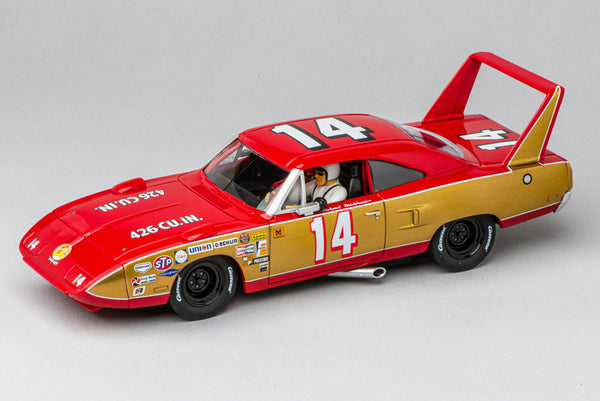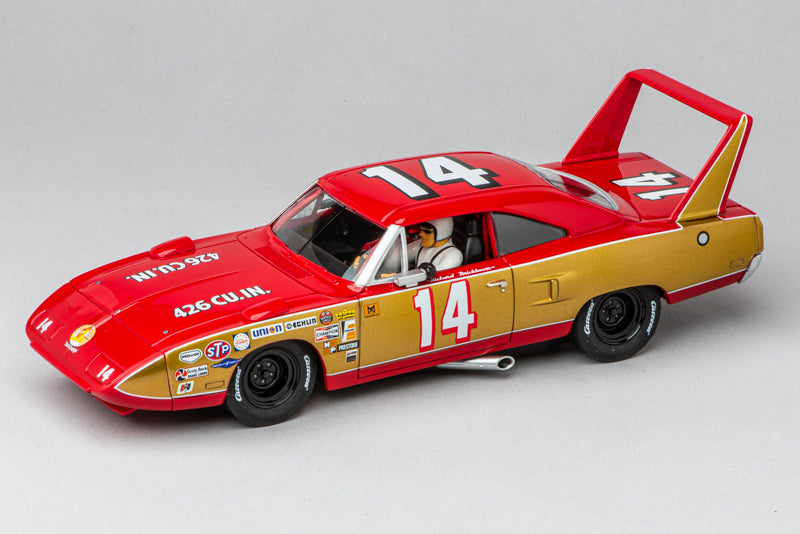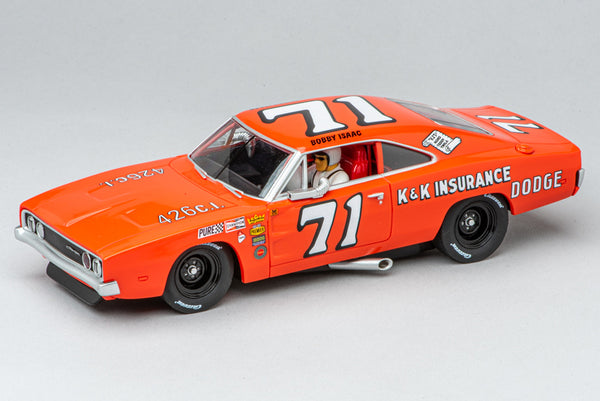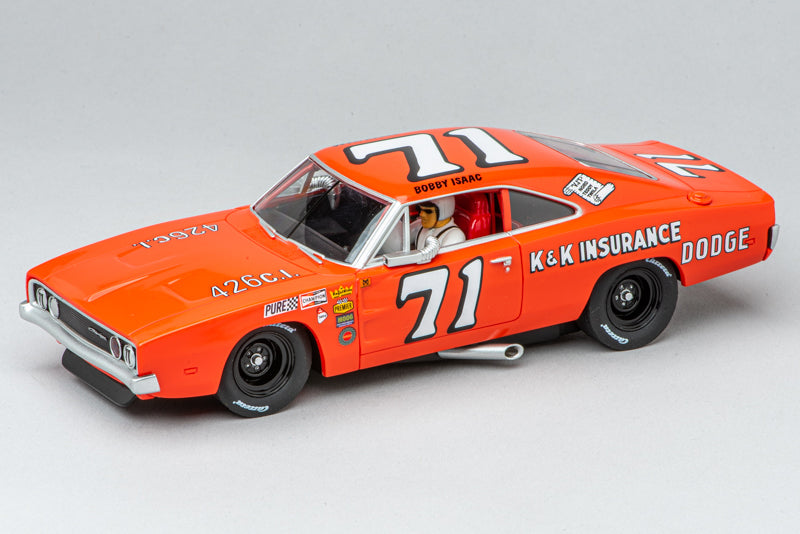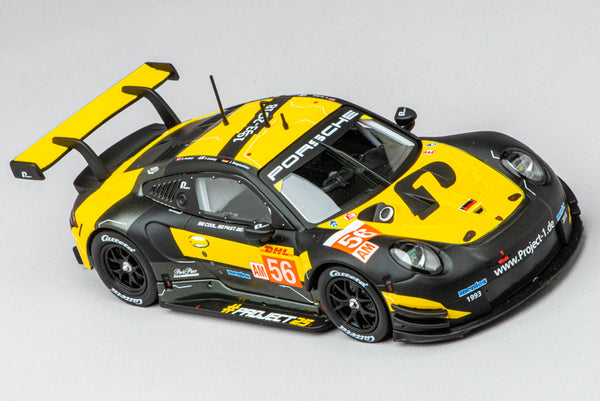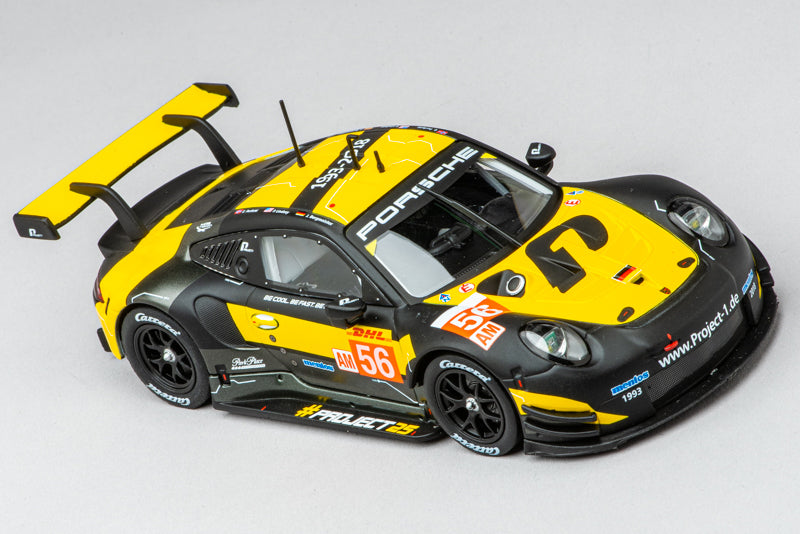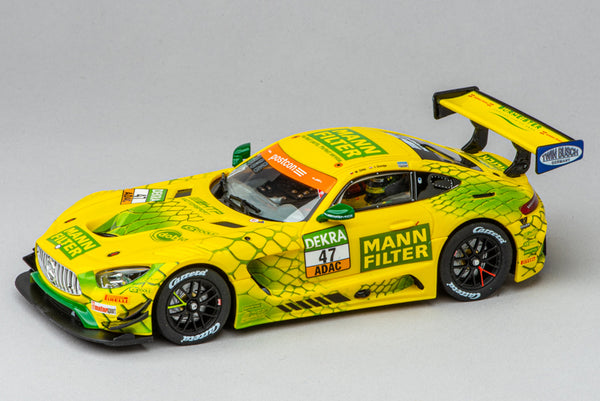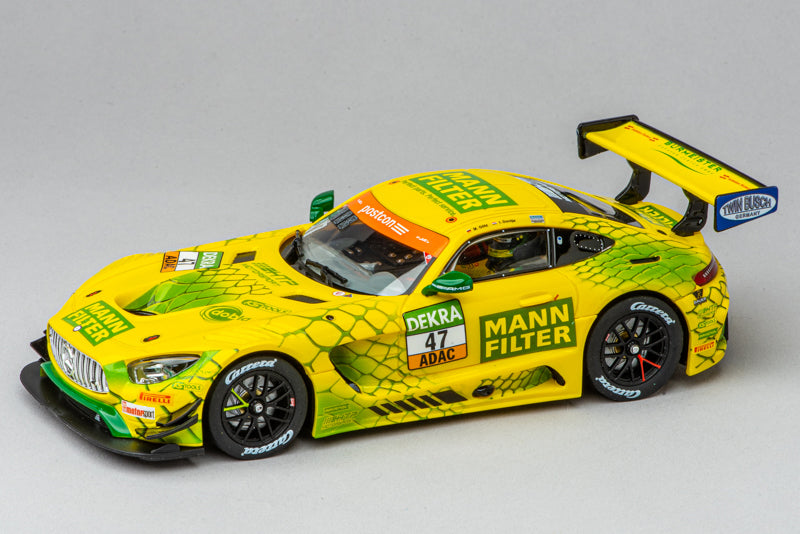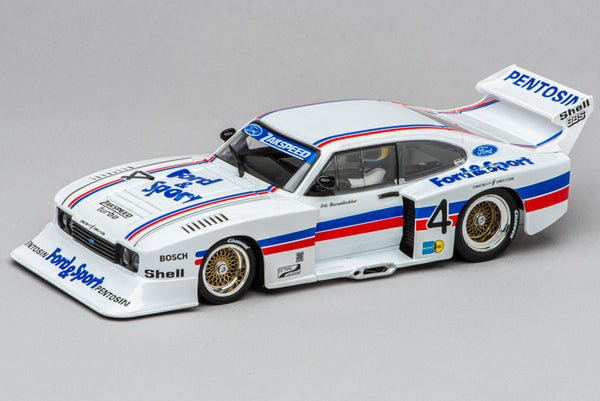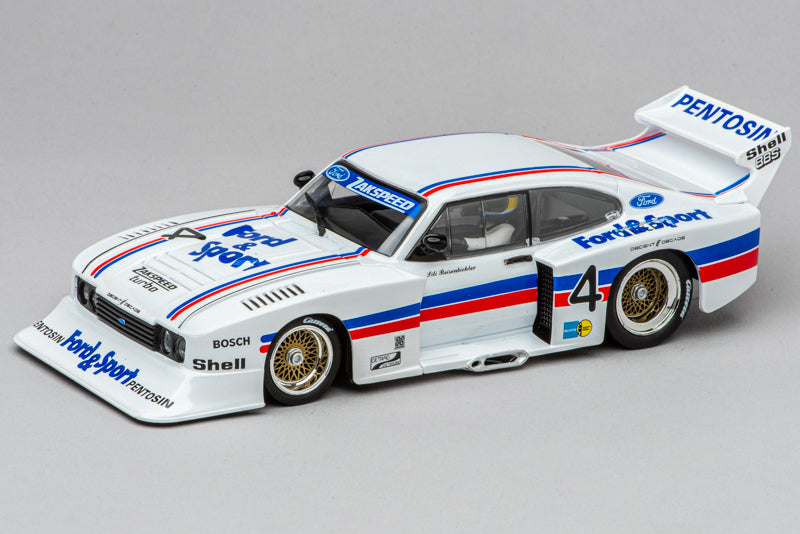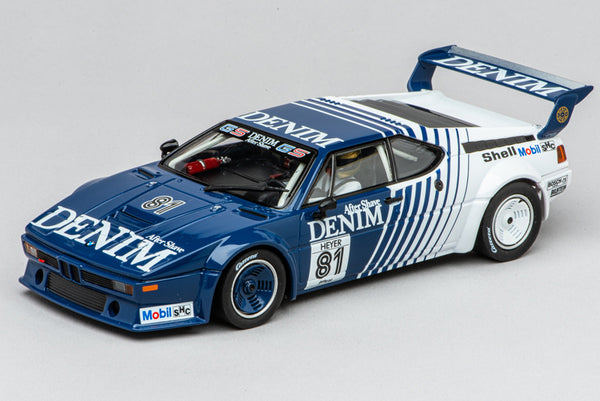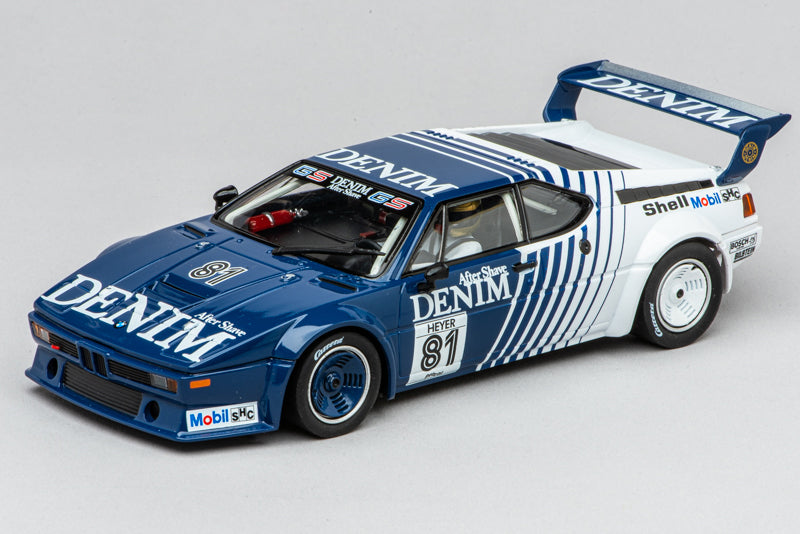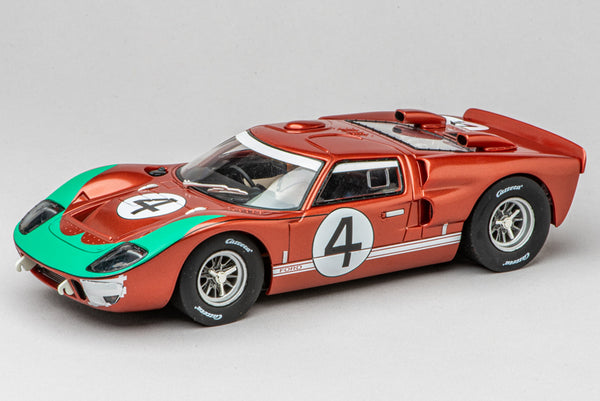
Carrera DIGITAL 124 Ford GT 40 Mk II
Carrera DIGITAL 124 Ford GT 40 Mk II
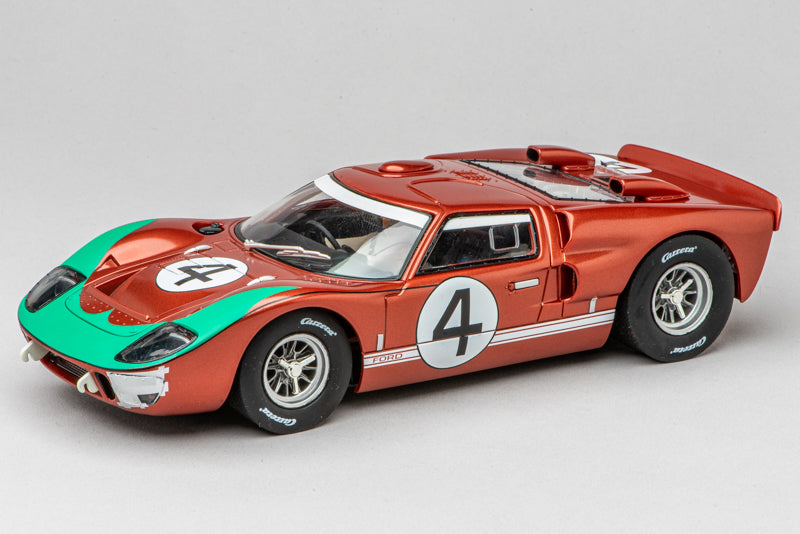
Item No. 23896
It's been some time since the last Ford GT Mark II was released, but the car continues to enjoy undiminished popularity among drivers of historic GT cars. CARRERA is responding to this demand by adding the Ford with chassis number 1032 to its lineup this year.
By 1966, Carroll Shelby and Holman & Moody (a US race car manufacturer) were already heavily involved in the "Le Mans: Ford vs. Ferrari" project, and up until then, everything was going quite well. The 7-liter Fords dominated the 24 Hours of Le Mans, finishing first through third in arguably the most famous period in Ford's racing history. Henry Ford's anger at not being able to buy the Ferrari brand was appeased. The background to the story is well known: Ford wanted to buy Ferrari to reposition itself in motorsports, as the three major American automakers – Ford, General Motors, and Chrysler – had decided to stop motorsports in the late 1950s, but this decision was torpedoed by Chrysler's involvement in NASCAR. The talks between Ford and Ferrari were already well advanced. But ultimately, they ended up arguing over a "small matter": Enzo Ferrari was determined to manage Ford's motorsports activities alone, without any say, while Henry Ford II, in turn, refused to let Enzo Ferrari dictate anything to him. The classic problem of two alpha males. The talks ended inconclusively; Henry Ford II was furious and declared war on Ferrari.
In fact, the GT40s won Le Mans four times in a row. The GT40's legacy is so enduring that in 2005, Ford built the Ford GT, which was developed from the Ford GT Concept Car introduced in 2002—a modern interpretation of the original race car. The successor to the 2005 GT was the new GT in 2016, which we also know from the current Carrera lineup.
But back to the MK II: This car, chassis number 1032, is one of eight MK IIs. It was completed on November 5, 1965, along with P/1031, by Ford Advanced Vehicles in Slough, England. P/1031 is the dark blue GT40 with the yellow front end (not yet available in the Carrera range). It was then delivered to Shelby American in California, where it was completed in MK II configuration, including the 427 engine with twin four-barrel carburetors and a four-speed transaxle. Painted white with a black nose, it was then driven by Walter "Walt" Hansgen and Mark Donohue as one of two Shelbys in the 1966 12 Hours of Sebring, where it finished second.
After returning to California and further testing and development, it was painted bronze with a green front end and entered in the 1966 24 Hours of Le Mans. The No. 4 drivers were Paul Hawkins and Mark Donohue. During this race, Dan Gurney, driving another MK II, set a new Le Mans lap record of 142.98 mph.
By the way, the No. 4 retired after just 12 laps with differential damage.
Ford had ended an era at Le Mans. Ferrari would never again achieve an overall victory in the 24-hour race.
And another interesting detail about chassis number 1032:
Upon returning to the United States, this No. 4 MK II was painted to look like the Le Mans winner and then exhibited throughout the country by the Ford Motor Company.
CoMod Lotus


